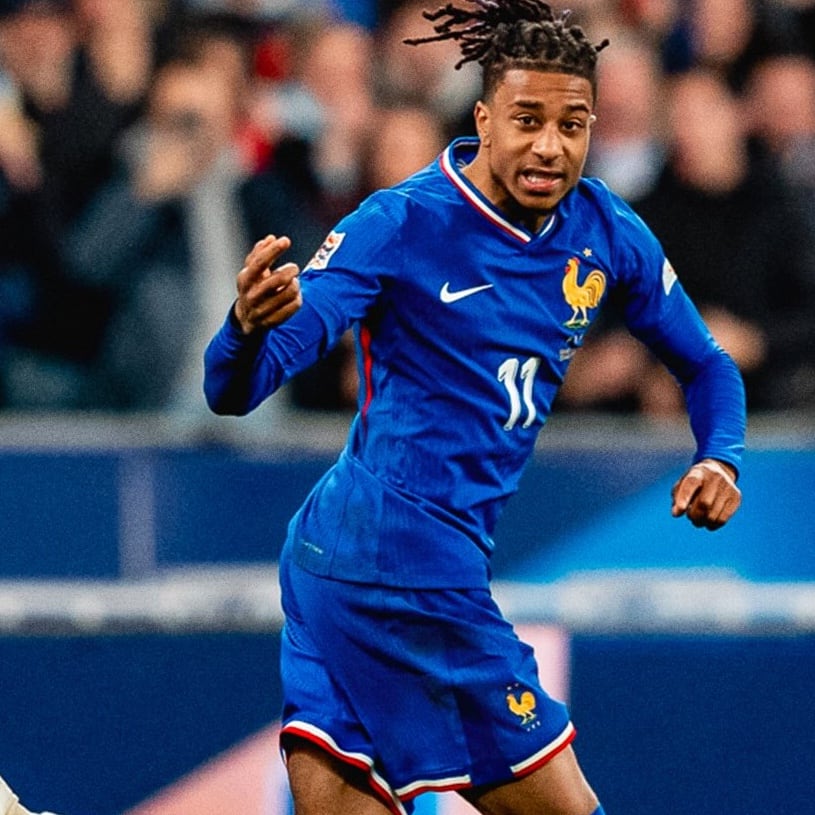The 2022 World Cup is quickly approaching and with that will be several large Showdown GPPs where you will be aiming for the first-place prizes. In this article, I examine different Showdown lineup constructions along with some case studies. International games often feature lower score lines, so I'm starting by discussing what I call "1-0" constructions.
The basic premise is simple:
If we assume the final score of a game is 1-0, which lineups are most likely to win?
Basic Construction
First, consider how fantasy points are scored in the DraftKings format in 1-0 constructions. Set-piece takers and attackers who whip in crosses are going to take a larger percentage of the total points. We expect the winning lineup to have the goalscorer and whoever gets an assist (if awarded). The winning goalkeeper will get 10 points for the win and clean-sheet bonus, and defenders get a three-point boost from the clean sheet. With this framework in mind, the following GPP construction seems favorable to winning first place:
| CPT | Winning team goal scorer |
| FLEX | Winning team's set piece taker |
| FLEX | Winning team's goalkeeper |
| FLEX | Winning team defender of choice |
| FLEX | Opposing Player (to fill lineup requirements) |
| FLEX | Wildcard (depending on salary and slate context) |
I'll talk about variations on this construction below, but this is the basic idea. Depending on the price structure, your defender choice might be a salary saving center-back. Since we are speculating there is only one goal, we want the player on the losing team to have some sort of floor in this game script. Maybe this means rostering the opposition's main set-piece taker or a cheaper full-back who may press up the field to equalize. In case the winning team's primary set-piece taker doesn't get the assist, it is worth making your wildcard player someone who at least has a chance of getting the assist themselves.
Variations
The lineup construction above is chalky in large GPPs. We aren't doing anything sneaky with respect to our opposition by playing lineups like this where the captain is an obvious goalscorer. In large-field soccer GPPs, the payoffs when we are correct will make us want to consider some lower-owned combinations of players that can still win in 1-0 game scripts. Every slate is different but there are plenty of other options for lineups.
- Second Goalkeeper: If the winning side of a 1-0 game script is a massive favorite, the opposing goalkeeper is going to be affordable and has routes to a ceiling. If the goalscorer is a striker without set pieces and they are the optimal captain, they'll likely have many shots on goal. In this game script, the opposing goalkeeper could easily be optimal with four or five saves and only one goal conceded. The field leans on the reluctant side to play two goalkeepers in the same lineup, as well.
- Set-Piece Taker Captain: Set piece takers are chalky in the captain spot on DraftKings, but it's easy for them to be optimal with their usual floor and an assist, while the goalscorer is more of a poacher who doesn't accrue many open-play points. They could also easily be the goalscorer themselves, leaving us with other options to find an assist.
- Full-back/Defender Captain: This type of captaincy is worth considering on a slate with difficult pricing and expensive attackers. A full-back potentially offers the salary relief to get different combinations of attackers than those making a more obvious captain choice. In a 1-0 game, they can be optimal even if they don't get a goal or assist.
- Less likely goalscorers: On teams where the goals are less likely to be concentrated among obvious candidates, you can find slightly less expensive and less popular goals if you are willing to play someone with lower goalscoring odds than the team's striker.
By tinkering with different combinations, it's easy to imagine some more galaxy-brained lineup constructions. There has been plenty of late-substitute goalscorers who win GPPs and you can even consider captaining the opposing team's set-piece taker. Think recent matches of Marcus Tavernier when Bournemouth have been losing and he's racking up corners and attacking stats.
Last but not least, the winning goalkeeper can certainly be optimal in 1-0 constructions where the winning team either soaks up pressure and shots on goal or there are few fantasy points scored. You don't want to build a massive portfolio of high-risk lineups, but they are certainly worth sprinkling in and you are less likely to be duplicated.
Case Study: Nottingham Forest vs. Fulham
In my Showdown breakdown for the Sept. 16 match between Nottingham Forest and Fulham, I speculated that 1-0 constructions featuring an Aleksandar Mitrovic captain would be chalk. Mitrovic's +110 anytime goalscoring odds stood well above others with the next closest being around +220. Mitrovic scores a large portion of Fulham's goals, so there were not many tempting goalscoring pivots to make. Finally, Fulham had around 25-percent implied odds to keep a clean sheet. A rough approximation puts a Fulham clean sheet with a Mitrovic goal at around 12.5-percent probability.
How did players construct lineups in the main GPP with 623 lineups? First, I listed combinations of four players in this game common for 1-0 constructions along with their cumulative rostership. If you include Mitrovic as a goalscorer, two set-piece takers in Willian and Andreas Pereira, and goalkeeper Bernd Leno, you end up with the following:
| Captain | Flex | Flex | Flex | # of Lineups | % of Lineups | Unique Lineups |
| Mitrovic | Willian | Andreas | Leno | 11 | 1.8% | 6 |
| Willian | Mitrovic | Andreas | Leno | 1 | 0.2% | 1 |
| Andreas | Mitrovic | Willian | Leno | 1 | 0.2% | 1 |
| Leno | Mitrovic | Willian | Andreas | 6 | 0.9% | 4 |
Next, I list combinations of three of the players above, but these lineups do not have all four:
| Captain | Flex | Flex | # of Lineups | % of lineups | Unique Lineups |
| Mitrovic | Andreas | Leno | 30 | 4.8% | 20 |
| Mitrovic | Willian | Leno | 14 | 2.2% | 9 |
| Andreas | Mitrovic | Leno | 7 | 1.1% | 4 |
| Willian | Mitrovic | Leno | 3 | 0.5% | 3 |
| Leno | Andreas | Mitrovic | 13 | 2.1% | 9 |
| Leno | Willian | Mitrovic | 4 | 0.6% | 3 |
The total amount of lineups considered above is 90, for a total percentage of 14.4.
You shouldn't draw too many conclusions from one post-match spreadsheet and I think more studying is always in order, but this data gives some actionable takeaways and things to investigate in the future.
- If you use the calculation of a Mitrovic goal and Fulham clean sheet at 12.5 percent as a proxy for how utilized you expect Mitrovic 1-0 constructions to be, there is likely not much leverage to be gained from this construction.
- Six users max entered the contest with 18 lineups; only three of those 108 lineups featured a combination of the three players above. Usually, you'll see sharper players max enter these contests and it's notable they were avoiding these combinations.
- Due to the common player combinations in this game, duplication was occurring despite the small-field size. In larger fields, I'd expect even more duplications. This isn't necessarily a bad thing, but duplicated lineups need to win more often to be profitable.
Final Thoughts
Lineups built around a 1-0 game script certainly can be good GPP lineups, but you need to be sensitive to slate dynamics when constructing them. In matches featuring concentrated attacks, I am now a bit more likely to consider other approaches or variations mentioned above. The angle of a set-piece taker as captain is also an interesting option based on this one-game sample, but of course, more data is needed. Of note, Willian was a surprise inclusion in the starting XI, which likely made Pereira captains less popular. In larger field contests, I am going to be more sensitive to duplication by perhaps leaving some salary on the table or considering slightly unusual player combinations like both goalkeepers.
I'd be happy to hear your thoughts, angles and perspectives on this, so stop by the RotoWire Discord to chat Showdown strategy and more!













































